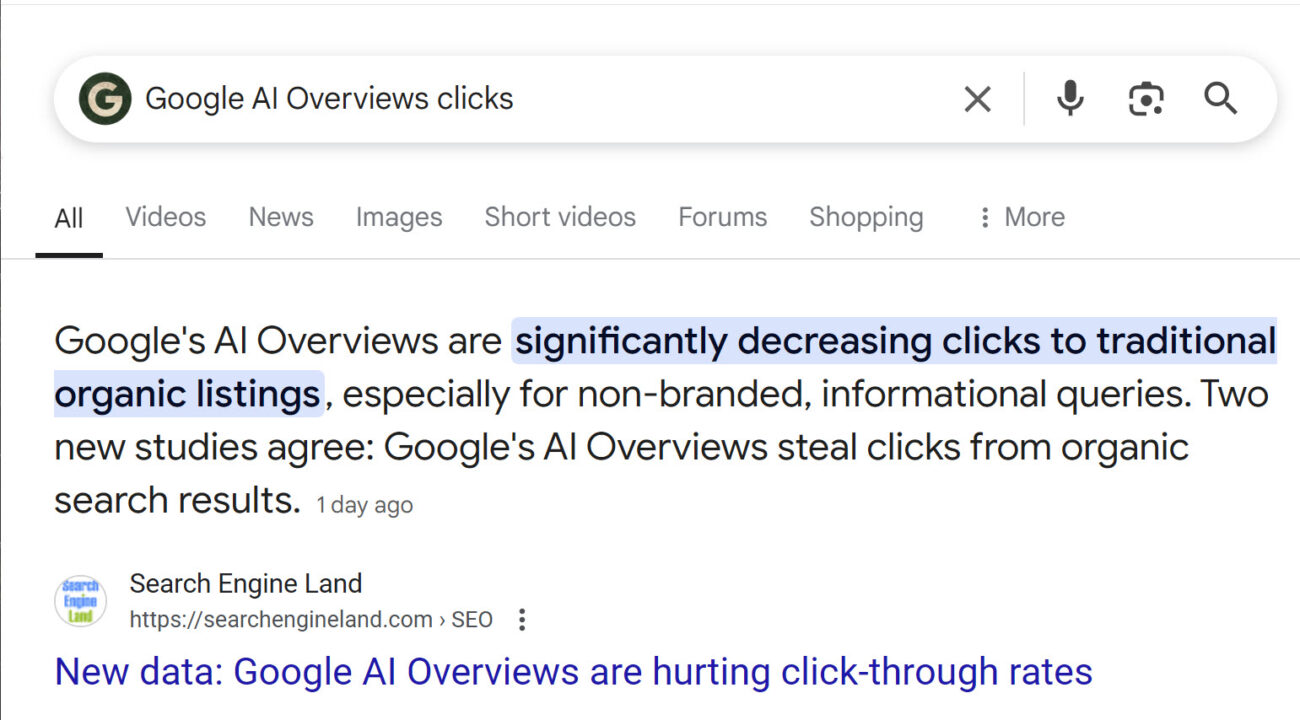Google has introduced the Helpful Content update as part of their continued effort to enhance user experience and provide valuable, reliable information. This initiative aims to elevate the quality of content available across its platforms, benefiting both content creators and consumers seeking credible information.
A big motivator for Google is the massive proliferation of AI-generated content on the search engine. Users are increasingly being served gibberish results to queries, and faltering confidence in Google’s algorithm must be addressed.
Let’s delve into what this update entails and how businesses can optimize their marketing within this framework.
What is Google’s Helpful Content Update?
The goal of the update is to elevate content that genuinely assists users in finding answers to their queries or solving their problems.
Key Elements of Helpful Content
- Usefulness: Content that offers genuine value, addresses user queries comprehensively, and provides actionable insights or solutions.
- Credibility: High-quality content backed by expertise, evidence, and authoritative sources, fostering trust among users.
- Relevance: Content that aligns with user intent and remains pertinent to the topic or query at hand, ensuring it meets the user’s needs.
These guidelines are vague, and we have no way of knowing exactly which attributes Google is monitoring. However, there are plenty of resources dedicated to the specifics of good webpage copy.
How Content Creators Can Align with the Helpful Content Update
To get you started, here are some actionable techniques and examples you can use to boost your content in the algorithm!
Understanding User Intent and Queries
- Keyword Research: Utilize keyword research tools to identify user queries and intent behind searches. Craft content that directly addresses these queries.
- Long-Tail Keywords: Target long-tail keywords that reflect specific user needs or questions. Create content catering to these nuanced queries.
- Semantic SEO: Incorporate related terms and concepts to provide comprehensive coverage of a topic, ensuring your content aligns with diverse user search intents.
- Example: If users are searching for “best budget-friendly smartphones for photography,” create a detailed review comparing cameras and features, catering to the specific budget-conscious audience.
Showcasing Expertise and Authority
- Original Research: Conduct original research within your niche to provide unique insights and data-driven content.
- Author Bios and Credentials: Highlight author credentials, expertise, and industry experience within content or author bios.
- Case Studies and Success Stories: Share real-life case studies or success stories that illustrate your expertise and practical application of your knowledge.
- Example: If you’re a financial advisor, create content detailing successful investment strategies, backed by data and real-world outcomes, showcasing your expertise in the field.
Crafting Comprehensive and Actionable Content
- In-Depth Guides and Tutorials: Develop comprehensive guides, tutorials, or step-by-step instructions that thoroughly address user queries and provide actionable solutions.
- Visual Aids and Multimedia: Incorporate visuals, infographics, videos, or audio elements to enhance content comprehension and engagement.
- Checklists and Templates: Offer downloadable resources like checklists or templates that users can apply in practical scenarios.
- Example: For an educational content creator, develop an in-depth course syllabus with modules, downloadable resources, and video lectures, offering a complete learning package.
Emphasizing Authenticity and Transparency
- Citing Sources: Reference credible sources, studies, and data to support your claims, enhancing content credibility.
- Behind-the-Scenes Insights: Share behind-the-scenes stories, experiences, or challenges, adding authenticity to your content.
- Disclosure of Relationships: Clearly disclose any sponsorships, affiliations, or partnerships to maintain transparency.
- Example: In a video promoting a CRM (content resource management) platform, note whether your review includes sponsored content and provide detailed information about your testing process and criteria for evaluation.
Regular Updates and Engagement Strategies
- Content Refresh: Periodically update and improve existing content to ensure it remains relevant and accurate.
- User Engagement: Encourage user engagement through comments, forums, or interactive elements, fostering a sense of community.
- Respond to Feedback: Address user feedback, questions, or concerns promptly to enhance user experience and trust.
- Example: For a technology blog, regularly update reviews of gadgets with new features or improvements, and actively engage with readers in the comments section.
These tips should provide a great basis for your own content strategy, but be sure to do your own research! This article from Search Engine Journal has a ton of useful advice for webpage content that meets the standards of the Helpful Content update.
Benefits of Aligning with Helpful Content Update Guidelines
We shouldn’t take for granted that Google’s suggestions are always in the best interest of website owners and advertisers. However, in an era of unprecedented AI-generated spam, we believe this update will serve everyone’s needs. Following these guidelines for your website content should have the following effects:
Improved Visibility
Content meeting Helpful Content guidelines is more likely to rank higher on Google, enhancing its visibility to users.
Enhanced Trust and Authority
Aligning with these guidelines establishes credibility and search engine authority within your niche or industry.
User Satisfaction
Creating content that genuinely helps users leads to higher satisfaction and loyalty.
Final Thoughts
Google’s Helpful Content update is designed to elevate content quality and user satisfaction across its platforms. Online content creators who focus on delivering value, credibility, and relevance in their content are likely to benefit from increased visibility and user engagement.
By aligning with these guidelines and consistently providing high-quality, useful content, you can not only improve your visibility on Google but also contribute positively to users’ online experiences, fostering trust and loyalty in your audience.
It’s encouraging to see Google doing their part to promote useful content, and we’re glad their advice aligns with our own. We’ll continue to monitor the results of this update and let you know if our suggestions change!
Check out Google’s documentation on their Helpful Content Update here.
By the way – if you’re in need of SEO/PPC services, content assistance, or just want to chat about your online marketing, get in touch for a free consultation. We’re always happy to help!





